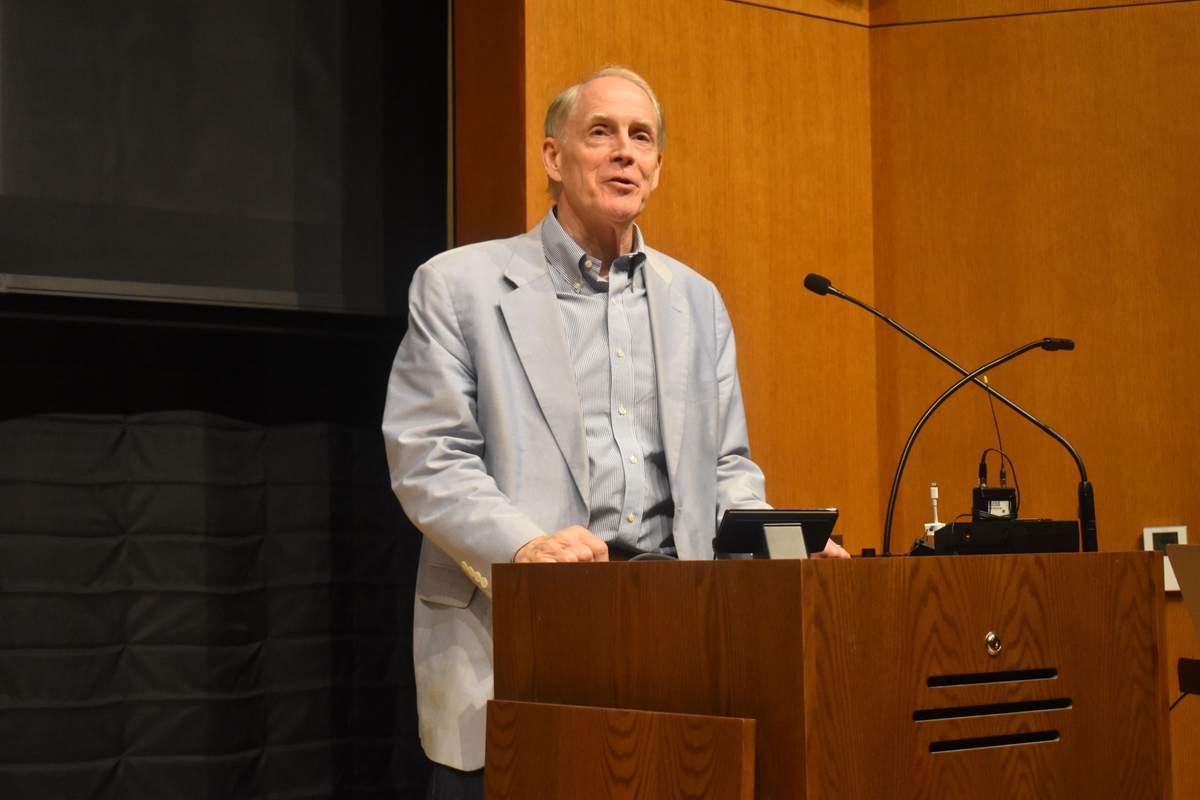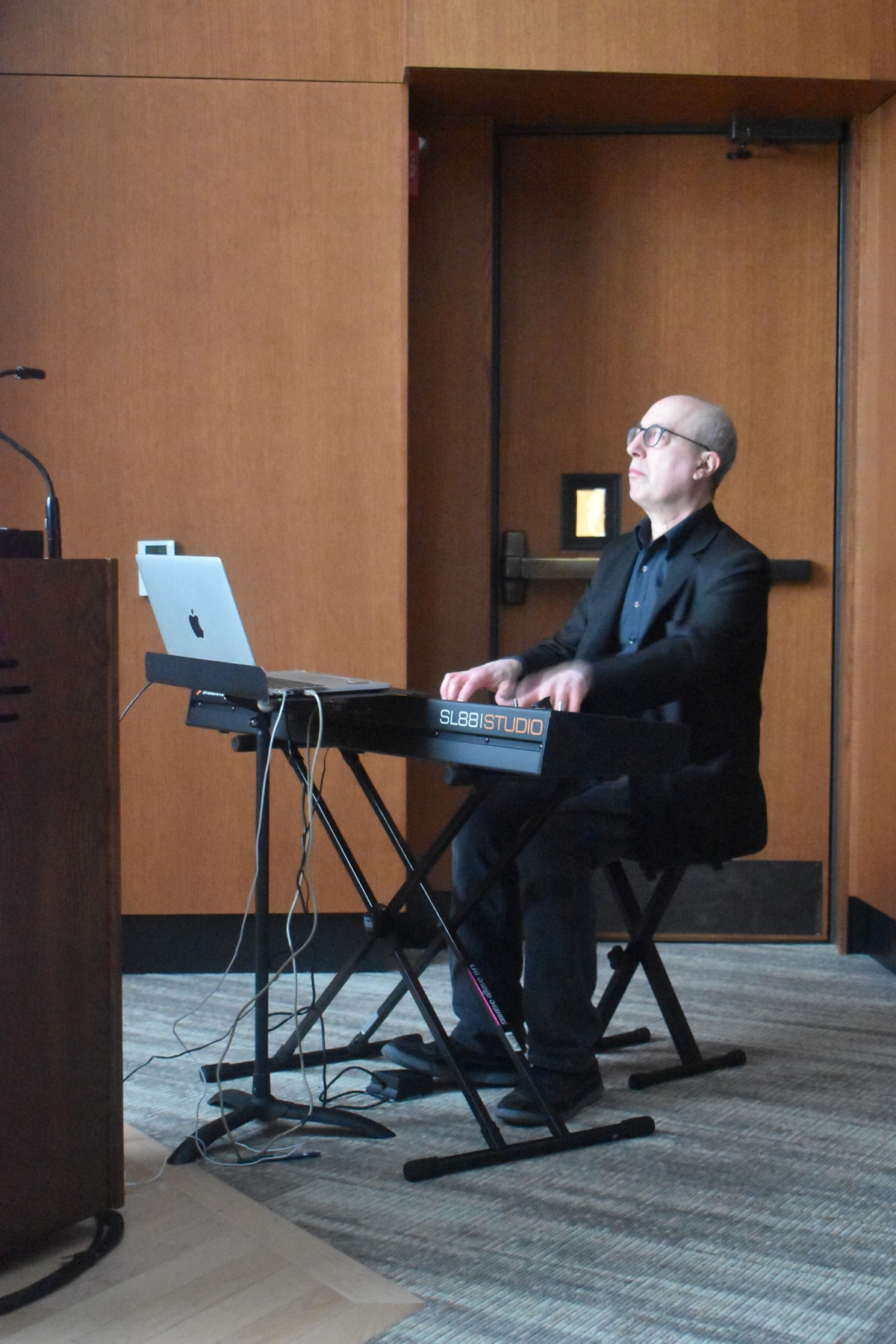
Still from Within Our Gates.
As Yale Film Archive launches into the last quarter of its 2024 spring semester programming, it offered something a little different on Thursday evening: silent films that each had a special distinction.
The first, presented in conjunction with the Beinecke Rare Book and Manuscript Library, was a selection of Solomon Sir Jones Films from 1924 to 1928 that are currently a part of the library’s holdings. The second was a showing of Within Our Gates, a 1920 film written, produced, and directed by Oscar Micheaux; it’s the oldest known surviving film with a Black director. One more bonus: both films on this evening were accompanied by live music, played by pianist Donald Sosin.
Archer Neilson, program coordinator of the Yale Film Archive, came to the podium to welcome everyone to the screening, which would offer a view of “African American life in the 1920s through life and fiction.” She introduced Donald Sosin as a musician with over 50 years’ experience, appearing on over 50 DVDs and on television. “If you are watching silent movies on Turner Classic Movies, you are very likely listening to a score by Donald Sosin,” she said.
She then gave an overview of Oscar Micheaux’s life and career. Born in Illinois in 1884, he wrote a memoir of his time homesteading in South Dakota that he turned into a film that is now lost. Within Our Gates was also lost for decades, until a copy was found in Madrid. Though pieces of it are missing and title cards are different than the original, there is now a copy in the Library of Congress and at YFA.
Next to the podium was author George Miles, an alumnus of Yale retired from the Beinecke. Miles spoke about Solomon Sir Jones, a “forgotten figure” who, as an active Baptist minister and successful entrepreneur, was able to obtain a 16-mm motion picture camera in the early 1920s and began shooting films on his travels, including in the Black communities of Oklahoma. Though the films “slipped into obscurity” after his death in 1936, a number of them were obtained by the Beinecke, restored, and digitized. Miles also mentioned that, though we would only get a sample of them at the screening, but all six hours were available through the Library’s website, so one could “dig in after tonight all you want.”

Karen Ponzio Photo
George Miles.
The Solomon Sir Jones films each began with a placard that told what was being filmed. Locations and events — Beaumont, Texas, Mt. Zion Church after the 1921 Greenwood Massacre in Tulsa, a high school and grade school in Oklahoma, a funeral — were shown. Sosin volleyed between joyous music (for a parade and for children playing stickball) to more somber tones for the funeral procession. Each selection gave an insight to the happenings of the time, with many faces shown in close up. Some children looked into the camera with big smiles. Others seemed to look at it with incredulous eyes. Each film, though short, felt like an important piece of documentation of a time we may not have had otherwise.

Still from Solomon Sir Jones Films.
Within Our Gates began with an explanation of how the film was recovered and restored. The original English title cards were lost except for four; the cards on this print “can only approximate Micheaux’s originals,” as they were translated from Spanish back into English.
The film follows the personal drama and political strife suffered by Sylvia Landry, a schoolteacher from the South who travels up North to visit her cousin. The title cards state that the North is “where the prejudices and hatreds of the South do not exist — though this does not prevent the occasional lynching of a Negro.” The film explores those prejudices of the South, including misinformed accusations, angry mobs, and lynchings later in the film as flashbacks to explain past experiences and the ways in which some the Northern people Sylvia meets help and hurt her in her quest to keep the school she is working for open. The film tries to do a lot in its short run time (though it behooves the viewer to be reminded that a large piece of the film has been lost). Some of its continuity may not be there, the impact of the subject matter remains.
Does Sylvia get the money for her school? Does her ex-fiancée find his way back to her, or does she find love with another? What further tragedies will she suffer? I advise you to find out for yourself, as this film can be accessed on YouTube, though the big screen experience with live music was one to behold.

Karen Ponzio Photo
Donald Sosin.
Sosin’s accompaniment throughout added to the delight of Sylvia’s small joys and the drama of the deceit that befalls her. It is hard to walk away from this film without remembering that although it is a work of fiction, the situations are part of the nation’s past, and must not remain silent.
Yale Film Archive has added an event this Monday the 8th in conjunction with the Latino and Iberian Film Festival at Yale (LIFFY) that features the Argentinian film La Practica and its writer/director Martin Rejtman, as well as Yale’s own Margherita Tortora. More information about that event as well as others can be found on the YFA website.

To anyone interested in the early days of film, I recommend the biography "Daughter of the Dragon" by Yunte Huang about the first Asian American movie star Anna May Wong. Out in hardback how.